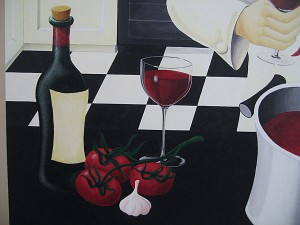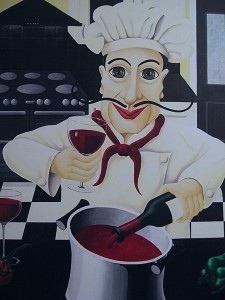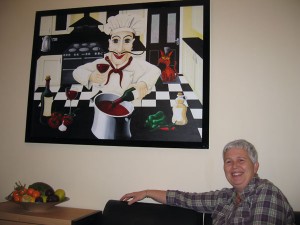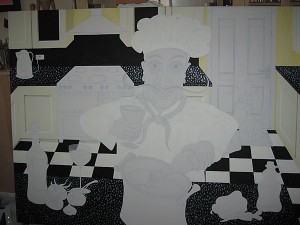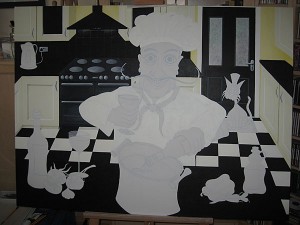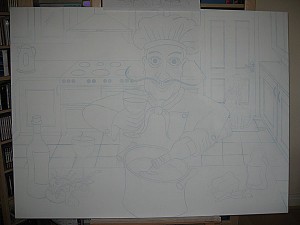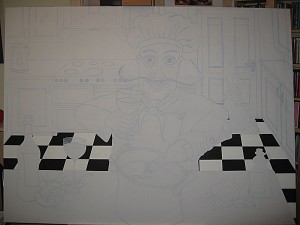Step 9 – My Excitement is mounting as I reach for my wider colour palette from amongst my box of tricks. The moment I have been waiting for…it’s time to bring Salvatore to life!
How to tempt a good looking Italian chef into the kitchen I wonder, a light Valpolicella or a cheeky Chiantio Classico? Surely a couple of bottles of red will coax him out and for the sake of artistic integrity (research is always important) I just know I will have to test at least one of the bottles from the still life I have set up in my studio to help with my composition. Oh dear, I need to paint a glass of wine…it seems that time is now!
It’s been a long time since I have sat and truly exercised my powers of observation, but the wine glasses in my large acrylic painting have quietly troubled me since I was asked “so, how do you paint something that’s see through?”
I hadn’t really thought about how I would tackle them until now, but as the saying goes “necessity is the mother of invention”, my response: paint what you see!
Step 10 – A good helping of flake white aded to my stay wet palette I’m ready for…
…a touch of Cadmium Red (light), followed by a little yellow ochre, (sip)
…gently darkened in places with a little burnt sienna
…a smidgeon of Alizirin Crimson…
…blues eyes or brown?
Decisions, decisions, let’s go hazel…
Well, hello there Salvatore!!
I don’t mind if I do…Cheers!
My very large acrylic painting is nearly finished – add olive oil, green and chilli peppers, large orange cat in top hat (yes, that does say “large orange cat in top hat”), signature and a frame and we’re ready to go. OK, so there’s some time involved, weeks in fact but…
Step 11 – Hang! Welcome to your new home Salvatore!
That used to be that “really big empty wall in our kitchen” – turned out quite nicely, judging by the smile on my face! You can check out this and other large acrylic paintings (and some smaller ones) in my KL Art Gallery

